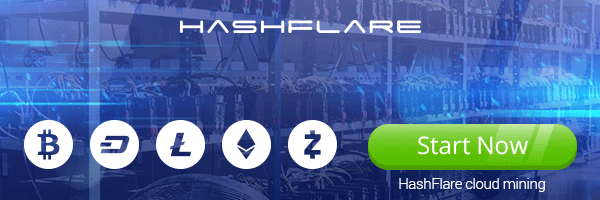On paper, the concept of a “stablecoin” is relatively simple. Cryptocurrencies are notoriously volatile, and traders like being able to cash out quickly. Stablecoins are cryptocurrencies that allow for just that. Tied 1:1 to the price of a particular fiat currency (usually the U.S. dollar), they’re a way for traders to turn volatile crypto into highly liquid digital cash. The value of a dollar-pegged stablecoin is always just about a dollar – hence, “stable.”
At least in theory. A chorus of regulators, politicians and academics has been raising the alarm about the potential instability and risk stablecoins represent to the broader crypto market. Chief among those voices is Rohan Grey, an Australia-born, Columbia University-educated attorney who’s now an assistant professor at Willamette University College of Law.
This interview is part of a series called “Gensler for a Day,” where we ask industry leaders in a position to set or influence law about concrete policies they would implement. Check here for more “Policy Week” coverage.
Grey described the role of stablecoins in crypto trading with a metaphor that feels very “Scooby Doo”:
“It’s the slices of bread in between a 12-foot-high sandwich. You’ve got the sandwich, then the meat, then bread, then the meat, then the bread, then the meat. It’s the stuff in between every layer.”
In other words, stablecoins are infrastructure. The issue is that they’re virtually unregulated; most stablecoins claim to be “backed” by cash and cash equivalents, but there’s no requirement that they prove it. A two-year investigation by the New York State Attorney General’s Office found that the shadowy array of companies behind tether stablecoin issuer Tether, with a market capitalization of $69 billion – didn’t even have a bank for most of 2017. Just last week, the U.S. Commodity Futures Trading Commission (CFTC) determined Tether was only fully backed about 26% of the time between 2016 and 2018. Where was the money? And who’s running the show?
Late last year, Grey worked with U.S. Rep. Rashida Tlaib (D-Mich.) on a bill called the STABLE Act – short for “Stablecoin Tethering and Bank Licensing Enforcement” – which proposed that stablecoin issuers be subject to greater regulatory scrutiny. To hear him tell it, the shady tactics of stablecoin issuers are a threat not just to crypto, but also to the traditional financial system.
Here’s my conversation with Grey, edited and condensed for clarity.
More from Policy Week: David Z. Morris: DeFi Is Like Nothing Regulators Have Seen Before. How Should They Tackle It?
So, the name of this series is “Gensler for a Day” – how would you approach Gensler’s role, specifically?
I would tell him to have a phone call with all of the banking regulators and tell them to do their jobs, because it shouldn’t be his job to fix the stablecoin industry.
I think the securities regulation framework is already losing a framework. If you start at that point, you’re at best getting a half loaf, or putting it within a framework that is not actually able to deal with the major problems of the industry, which is that it’s fueled by shadow money.
Say more about “shadow money.”
The industry relies on liquidity at the off-ramp/on-ramp margins. And that liquidity is being provided right now by shadow banking institutions like the stablecoin issuers. It’s that liquidity, and those stablecoin issuers that allow the rest of the market to work the way that it does.
But the reason that those stablecoin issuers are able to do that is they’re not being regulated like banks, which have quite strict requirements on the kinds of instruments and actors that they can engage with. So if you’re engaging with stuff that isn’t allowed, or is an unregistered security – or could be – or even just is a not particularly reputable industry, then banks will often say, “We don’t want to let you do business.”
Imagine if everybody had to put in all of their crypto trading through their bank account. Would the crypto market look the way that it does right now? No, because all of those actors would be held accountable as fiduciaries for facilitating that kind of activity.
How did we arrive at this point where Tether is doing $70 billion a day in volume and the companies behind it have never been audited?
Historically speaking, the SEC has done a pretty [awful] job of navigating the margins of the “Wild West” of securities regulation. But the banking industry, at least since the 1930s [when the U.S. Federal Deposit Insurance Corporation was established], has done a pretty good job of keeping most people’s money safe.
The biggest reason that stablecoins haven’t already been dealt with is because there has been a loophole – a kind of carveout at the center of banking law that has been a serious problem, and in part led to the rise of the money market fund industry and some of the problems with shadow banking in 2008.
The law defines the concept of deposits in a very circular fashion. It says, “No one can issue a deposit unless you’re a bank,” but then it defines a deposit as “that which is issued by a bank” rather than functionally. [Per Grey: Banks “issue” demand deposits when they “accept” currency from a depositor.] So you have actors that issue something that by all accounts looks like a deposit, and by all definitions is functionally a deposit. But because it isn’t issued by a bank, they say, “Oh, it can’t be a deposit.”
This happened with money market funds. When money market funds first rose to prominence in the 1970s, there was a debate at the Office of the Comptroller of the Currency (OCC) and elsewhere about whether or not they should be considered depository institutions. And [the funds] lobbied extremely hard, and finance-friendly actors gave them an exemption. So they became this sort of parallel, separate category even though everybody was using their money market fund accounts as equivalent to a bank account.
Liquidity from the money market fund industry is the thing that’s still today driving a huge amount of the hedge fund industry. Because it would be very difficult to do all the [stuff] that they do if they had to do it through a regular bank account. This isn’t even just a unique problem with crypto, it’s just the next iteration of this longstanding problem. And of course, what happened? The money market fund industry needed a massive bailout in 2008.
I was surprised to see Sen. Cynthia Lummis (R-Wyo.), who’s been such a friend to the crypto industry, say that stablecoins should be regulated.
I think they’re skating to where the puck is going, and they see the writing on the wall.
So what can securities regulators do about all this? If you’re Gensler, how are you beginning to chip away at the problem?
I would be very clear that some of these things are securities, I would launch a series of high-profile investigations on some of the worst actors and I would put pressure on other agencies.
Everybody assumes that everything can be done through securities regulation, which is the product of an extremely successful, decades-long strategy of lobbying, because it’s the weakest of all the financial regulatory frameworks. Everybody who doesn’t want any regulatory scrutiny or accountability says, “First, I don’t want any. Second, if I have to have some, I want it to be securities law.”
Who are the worst actors, in your opinion?
The exchanges. And I would say the stablecoin issuers, but I would make a really big point and shame the other banking regulators that they should be doing this.
When you say “the exchanges” and “the stablecoin issuers,” do you mean all the major crypto exchanges and all the major stablecoin issuers?
Yeah. Is there a single one that we can honestly say is not trading unregistered securities?
I think Gensler has even said that.
Exactly.
What do you say to the argument that regulators have bigger fish to fry than these somewhat arcane crypto concepts?
My view has always been that as technology evolves, existing categories and existing practices get refracted through those technologies. When the first STABLE Act came out I said, “I think 50 years from now, there’s a good chance that people will be saying, ‘What’s a bank deposit?’ And we’ll say, ‘It’s the thing that we used to call stablecoins.’ And they’ll say, ‘What’s the stock exchange?’ ‘Well, it’s a thing that existed that was sort of a primitive version of the crypto exchanges we have now.’”
I’m not saying that because I think all of these new things are amazing new solutions or doing innovative new things. I think it’s because our language and our legal categories evolve with our technology. And for better or worse, this is the new digital native language, a new digital native technology.
It’s not just Tether, it’s not even just [USDC issuer] Circle, it’s literally every bank out there that will go, “Oh, we can issue something called a different name and suddenly we get to exempt ourselves from all those deposit laws that we’ve been hamstrung by for decades? Sweet! Let’s do that.” JPMorgan is issuing its own stablecoin; do they want that to be classified as a deposit? Of course not.
More from Policy Week
David Z. Morris: DeFi Is Like Nothing Regulators Have Seen Before. How Should They Tackle It?
Stablecoins Not CBDCs: An interview with Rep. Tom Emmer
Crypto Learns to Play DC’s Influence Game
Kristin Smith: Crypto Is Too Big for Partisan Politics
Lyn Ulbricht: Put America’s Geeks to Work, Don’t Cage Them
Preston J. Byrne: Decentralization’s Challenge to Policymakers Is Coming






